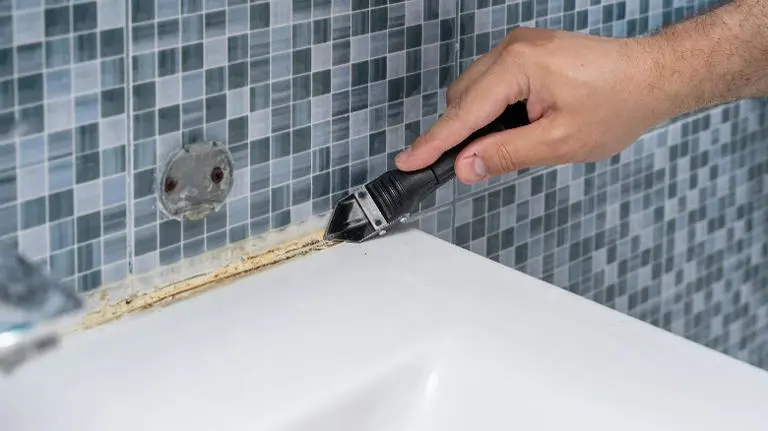
Projects for DIY Home renovating can be an enjoyable and gratifying way to save money, modernize your home, and possibly gain new expertise. Even though these projects may be rewarding, they are not without challenges. Many homeowners make common mistakes that can lead to costly repairs or even completed projects. This book will go over some of the most common DIY mistakes and how to avoid them, ensuring that your next project is a success.
1. Skipping the planning phase
One of the most common mistakes individuals make when starting a do-it-yourself project is not having a proper blueprint. Every endeavor, whether minor or huge, requires meticulous planning. This includes assessing the scope of the work, gathering the necessary tools and supplies, and understanding the applicable processes.Without a well-defined strategy, you may encounter unexpected challenges, such as realizing halfway through that you lack the necessary tools or underestimated the time required. Create a thorough project checklist and timeline to help you avoid this. Starting your project with organization can help to ensure that it remains under budget and runs smoothly.
2. Underestimating time and effort
Another common home repair mistake is underestimating the amount of time and effort required to complete a job. One is easily caught up in the excitement and believes they will be able to finish quickly. Many projects, particularly if you’re new to DIY, can take longer than expected.Realistic timelines allow you to give yourself extra time to deal with unexpected delays. Consider breaking down a large endeavor into smaller, more manageable tasks. This makes the procedure more enjoyable rather than stressful, and it also helps you stay organized.
3. Using the wrong tools
Having the right tools for the job is essential. Many do-it-yourselfers attempt to use whatever tools they already have, which might result in disappointing results and even pose safety hazards. For example, removing silicone with the improper equipment could damage the surface you’re working on and complicate the project in general.Spend time learning how to use wonderful tools designed specifically for your work and investing in them. Over time, preventing errors that result in damage or incomplete work can save you money and time.
4. Ignoring safety precautions
While safety is essential for every do-it-yourself project, people who are eager to get started may overlook it. Ignoring basic safety standards could lead to significant injury. When working with equipment or chemicals, always wear protective gear such as gloves, safety glasses, and masks. Make sure your workplace is clutter-free and well-lit.Before starting, familiarize yourself with any potential hazards associated with the materials or tools you’re using. For instance, when working with chemicals or adhesives like silicone, it’s essential to know how to handle them safely and, if needed, how to remove silicone properly without damaging surfaces. For more tips on safe removal, you can check out this detailed guide on how to remove silicone safely and efficiently.
5. Not prepping surfaces properly
Many do-it-yourself jobs rely on preparation, including painting, sealing, and tiling. Ignoring the need to thoroughly clean surfaces before introducing new materials is a common mistake. Re-caulking a bathroom or kitchen, for example, requires entirely removing the old silicone in order to make a tidy and firm new seal.If this stage is skipped, the fresh silicone may not adhere properly, resulting in leaks, mold development, and other issues later on. Allow surfaces to clean, sand, and prepare before adding new materials. Although it appears to be an extra step, it ensures a professional and long-lasting result.
6. Overestimating your skills
While learning new skills through do-it-yourself projects is great, it’s important to be honest about your abilities. Dealing with an overly complicated job can lead to frustration, blunders, and even damage to your home. For example, attempting intricate plumbing or electrical work without the necessary understanding could result in costly repairs or even unsafe conditions. Seeking professional aid is perfectly fine when a project requires more than your level of competence. Paying a specialist for a certain work can save you time and money in the long run while also ensuring correct and safe completion.
7. Using cheap materials
Although purchasing the cheapest materials may help you save money, this is typically a mistake. Affordable materials often wear out more quickly, necessitating more repairs or replacements sooner than expected. Investing in high-quality products, whether it’s flooring, paint, or adhesives, will help your project look better and last longer.Using superior silicone, for example, in sealing jobs can produce better results and last longer. Knowing how to carefully remove old silicone before applying new sealant is critical for ensuring a wonderful finish.
8. Not following instructions
Every item used in a DIY project comes with specific instructions for proper application. Ignoring these directions is a common mistake that might lower the quality of your work. When installing new fixtures, applying caulk, or mixing concrete, carefully follow the manufacturer’s recommendations.Ignoring procedures or rushing through the process may result in poor craftsmanship and, in some cases, be dangerous. Before you begin your project, make sure to carefully review the instructions and spend some time finishing each step.
9. Overlooking finishing touches
Many do-it-yourselfers rush through the finishing touches—such as painting edges, caulking corners, or sanding rough surfaces—after the majority of the project is completed. These last processes are just as important as the main project and can help distinguish a properly produced result from one that appears unfinished.Do not remove these pieces; they will improve the overall look of your work and give your project the polished appearance it deserves.
Conclusion
While DIY home remodeling initiatives save money and allow you to customize your space, they also bring certain challenges. Avoiding these common mistakes—skipping preparation, underestimating time, using the wrong tools, and so on—will ensure that your next project is a success. Remember that preparation and patience are essential; therefore, it is always worthwhile to invest in quality materials and processes.Paying attentive attention to details such as properly removing silicone from surfaces and adhering to all safety precautions can help you achieve a more professional, long-lasting finish.





